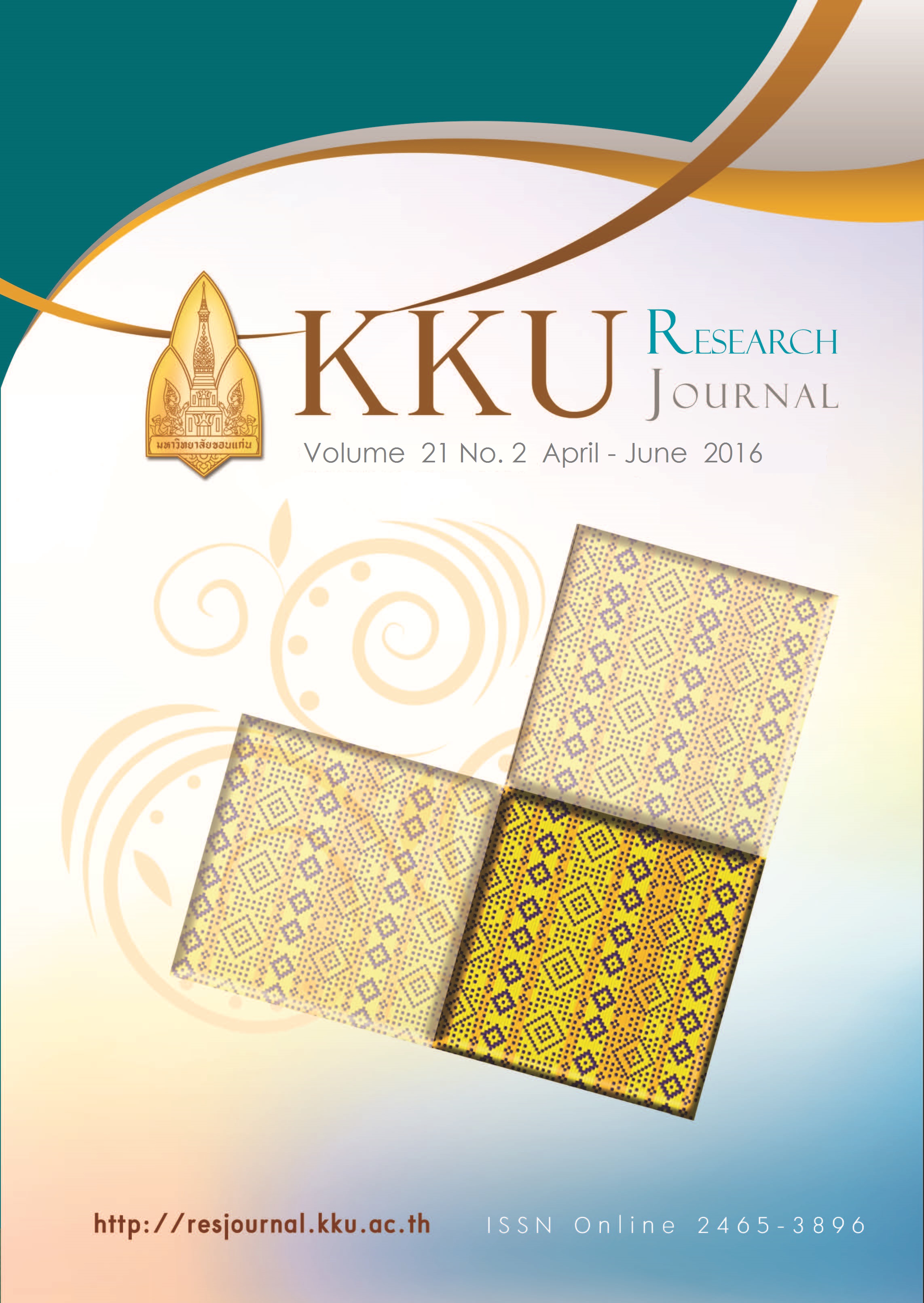Isolation and production of polyhydroxybutyrate (PHB) from isolated strain bacillus sp. using crude glycerol as a carbon source
Main Article Content
Abstract
Polyhydroxybutyrate (PHB) is polyester produced by a range of microbes under unfavorable growth conditions and stored as an intracellular carbon and energy material. PHB production is more expensive than petrochemical polymer production. The main production cost is the cost of carbon substrate. The aim of this study is to produce PHB using a cheap carbon source, crude glycerol, which is a major byproduct in the biodiesel manufacturing process. PHB producing bacteria species were isolated from the soil collected around biodiesel plants and screened by Nile Red staining method. The effects of sources and concentrations of crude glycerol on the biosynthesis of PHB were
investigated. The maximum PHB content obtained after 24 hours of batch cultivation was 23.59 % of cell dry weight at initial crude glycerol of 10 g/L and C:N ratio of 1:0.4.
Article Details
References
[2] Enrico G., Murry M.Y., Yusuf C. (1999) Fermentation optimization for the production of poly (β-hydroxybutyric acid) microbial thermoplastic. Enzyme Microb Technol 25:132–141.
[3] Javier M.N., John A.P., Juan C.H., Carlos A.C. (2013) Valorization of glycerol through the production of biopolymers: The PHB case using Bacillus megaterium. Bioresour Technol 133:38–44.
[4] João M.C., Catarina A., Christian G., Fonseca M. (2009) Poly (3-hydroxybutyrate) production by Cupriavidus necator using waste glycerol. Process Biochem 44:509–515.
[5] John A.P., Javier M.N., Jimmy A.L., Juan C.H., Carlos A.C. (2011) D e s i g n a n d a n a l y s i s o f poly-3-hydroxybutyrate production process from crude glycerol. Process Biochem 46:310–317.
[6] Kenji T., Takaaki I., Daisuke N., Maiko N., Yasuharu S., Masanobu M . ( 2 0 0 3 ) I s o l a t i o n a n d charaterization of Bacillus sp. I N T 0 0 5 a c c u m u l a t i n g polyhydroxyalkanoate (PHA) form gas field soil. Biosci Bioeng 95:81–2003.
[7] Shen L., Haufe J., Patel MK. (2009) Product overview and market project of emerging biobase plastic PROBIP.Final report. Utrecht University. Commissioned by European Polysaccharide Network of Excellence (EPNOE) and European Bioplastics. p. 243.
[8] Spiekerman P., Rehm B.H.A., Kalscheuer R., Baumeister D., Qteinbuchel A. (1999) A sensitive viable colony straining method using Nile Red for direct screening of bacteria that accumulate polyhydroxyalkonic acid and other
lipid storage compound. Arch Microbiol 171: 73–80.
[9] Zachary T.D., Shengjun H., Erik R.C., Armando G.M. (2011) Polyhydroxybutyrate synthesis on biodiesel wastewater using mixed microbial consortia. Bioresour Technol 102:3352–3359.


